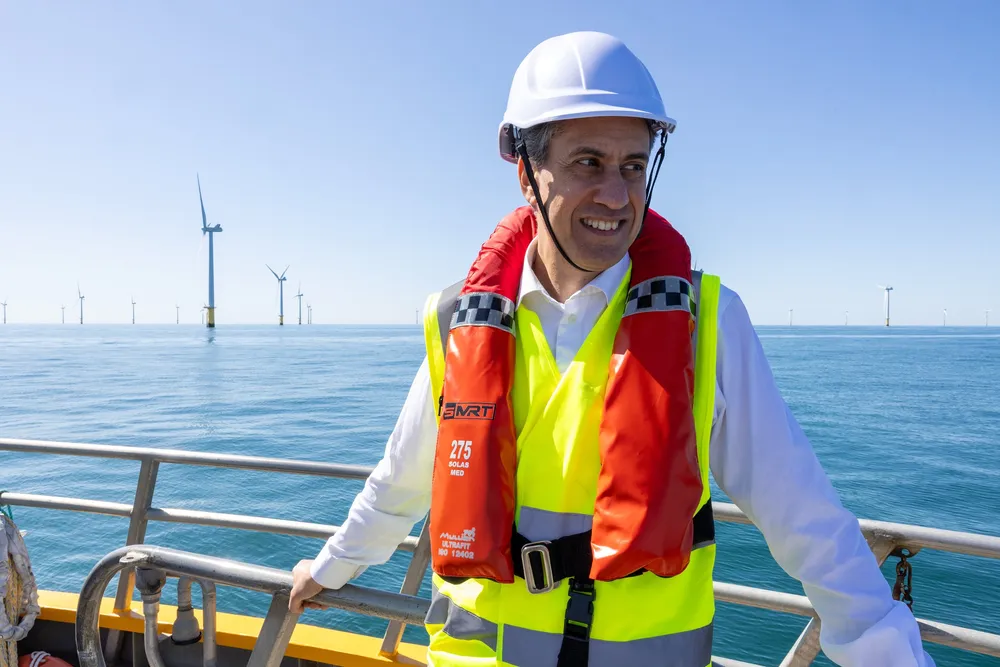UK fires the starting gun on CfD round that aims for record offshore wind uptake
The UK has boosted CfD funding since its AR5 flop and will now find out if it has struck the right balance with reforms

The UK has opened the bidding process for the AR7 allocation round offering Contracts for Difference for renewable energy and is hoping for record uptake from offshore wind projects after introducing a clutch of reforms.
With the opening of the process today (Thursday), renewables developers can enter eligible projects during a qualification window that will remain open until 27 August, according to the UK government’s most recently published version of its CfD terms.
Sealed and qualified bids can then be submitted during the week running 21-27 October.
The AR7 round introduces significant reforms intended to result in a record allocation of offshore wind capacity.
Changes include longer 20-year contracts to help developers and investors reduce risks and obtain better financing terms.
A rule change allowing for the participation of fixed bottom offshore wind projects still in the planning stages has swelled the pool of eligible projects to as much as 23GW.
Fixed bottom offshore wind is eligible to compete for a CfD for a maximum strike price of £113/MWh ($151/MWh), up from £102/MWh last year, based on 2024 prices.
Floating offshore wind has a maximum strike price of £271/MWh.
The government said it will also set budget and auction parameters to facilitate CfD backing for multiple test and demonstration floating offshore wind projects in the auction, aiming to avoid the situation where one bigger project uses up all of the available budget and more than 450MW of capacity was set aside for this purpose.
For onshore wind, the cap was set at £92/MWh.
Results from AR7 are expected sometime between 9 December and 26 February depending on procedural outcomes, including any appeals.
Fixed bottom and floating offshore wind will be notified of the results from their round slightly later than for onshore technologies.
Local content
"These updates are expected to speed up project delivery and create a more stable pipeline of opportunities," the UK's Offshore Wind Growth Partnership stated.
"For the UK supply chain, this means earlier and more predictable demand signals, opening the door to increased investment and growth across manufacturing, installation, logistics, and engineering services."
The reforms also included a surprise measure that allows Scottish offshore wind projects to receive higher clearing prices (maxima) than those further south.
This move is seen as an attempt to mitigate the punitive effects of an outdated system of transmission charges that was designed to reward electricity generators — which in those days meant thermoelectric — for locating close to the biggest centres of population and industry such as London, the English Midlands and the Northwest.
The UK government has said that it is starting work on a more radical overhaul of transmission charges.
This all comes as energy secretary Ed Miliband strains every sinew to chase down the targets in the government's ambitious Clean Power 2030 Action Plan.
This aims to deploy 43-50GW of offshore wind, up from around 16GW today, as well as roughly doubling onshore wind capacity to 27GW and trebling solar to 47GW.
Those targets are supposed to serve the ultimate goal of virtually eradicating fossil fuels from the power grid by the decade’s end, but Miliband has also told voters that bills will fall as a result.
To keep its targets within sight, the UK government will need to see a record-breaking wind capacity allocation of at least 8.4GW plus in AR7, according to Offshore Energies UK (OEUK).
The industry body questioned the decision to requite floating offshore wind projects to obtain full planning consent in order to qualify to bid in AR7, in contrast to the more relaxed requirement for bottom-fixed projects.
“We will be able to significantly increase wind-generated electricity by using the new generation of floating offshore turbines as well as fixed ones," said Thibaut Cheret OEUK wind energy manager,
"Floating turbines can produce 25% more electricity and in future auction rounds the government should allow the same consenting flexibility to floating wind projects as it has done for fixed wind."
(Copyright)